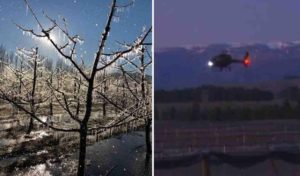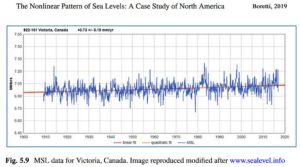by J. Curry, Sep. 10, 2019 in BigPictureNews
Anyone who still thinks green/renewable energy is the answer is invited to click over to a web page that monitors Germany’s celebrated Energy Transition (English translation here). The most recent six-month update has just been published. Despite a multi-billion-euro price tag, Germany’s attempts to ditch fossil fuels isn’t going well. At all.
Only six of the transition’s 14 goals (43%) appear achievable by 2020. Here are the two absolutely critical data points:
#1 – Germany’s CO2 emissions reduction targets won’t be met.
#2 – Its previously robust electricity grid is now vulnerable and insecure.
The story of Germany’s energy transition boils down to this: Something that used to work well has been deliberately broken, undermined, degraded, and crippled. A ton of money has been spent. To make things worse.
Over at Forbes, Michael Shellenberger discusses how this latest report card is being covered in the German press. In his words:
…
…
by Cap Allon, Sep. 10, 2019 in Electroverse
Frost-fighting efforts have shifted into overdrive on New Zealand’s South Island as a brutal Antarctic blast rips through the region — the first blast of many, according to NIWA forecasts.
Otago, a southeastern region of NZ’s South Island, is home to the buds of millions of dollars worth of stone-fruit. Forecasters say temperatures in central Otago plummeted to a bruising -5C (23F) on Tues morning, Sept 10.
Sprinklers were turned-on so as to deliberately encase the tender fruit in a protective clear-ice casing — an age-old method of frost-fighting. While helicopters and wind machines were also drafted-in to blow warm air over the orchards.
“It’s all hands on deck,” said Tim Jones, chief executive of 45 South Orchard and Packhouse in Cromwell, who expects the cold to stick around for at least another month.
“NIWA has got some news out there that this could be a challenging spring,” Jones added.
New Zealand has a higher-than-usual risk of sharp cold snaps and unsettled weather during the first half of the season, according to the National Institute of Water and Atmospheric Research (NIWA).
A rare sudden stratospheric warming (SSW) event is occurring 30-50 km above Antarctica which is already leading to unusual and extreme weather in parts of the Southern Hemisphere.

…
by K. Richard, Sep. 10, 2010 in ClimateChangeDispatch
The West Coast of North America has 20 long-term (90+ years) tide gauges measuring relative sea-level changes.
The East Coast has 33. Of the 53 total tide gauges, 45% (24) are negatively accelerating, 14 document falling sea levels, and just 11 have sea levels rising more than 3 mm/yr.

mage Source: Boretti, 2019
A cooling/non-warming North America
A few months ago, Gan et al. (2019) reported that the North American continent as a whole (180-0°, 15-60°N) “is one of the major cooling centers” in the Northern Hemisphere, with temperatures dropping after 1998 and no significant net change since the early 1980s apparent.
…
La géologie, une science plus que passionnante … et diverse


